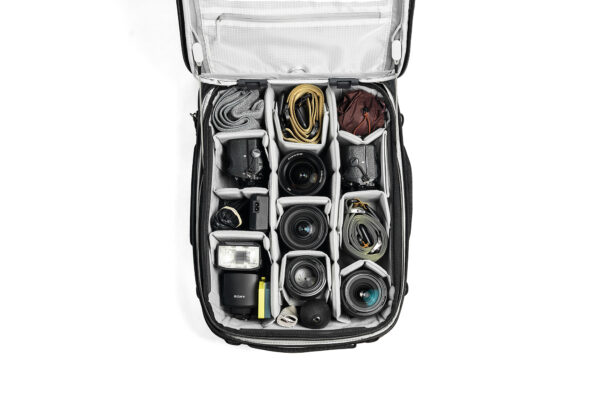What is the best photography software in 2024?
Because of smartphones, people now have more photos than ever before. Their cameras are better than many standalone cameras from a few years ago. But what to do with all those pictures?
Photo editing software allows you to organize and enhance your photos. Some photo editing software goes a step further and adds graphic design features. Great software should ultimately serve its users properly. This means that photo editing software for professionals should offer all the complex tools that professionals need to get the results they want. Below are some of the notable best photo editing software of 2024:
- Adobe Lightroom: This is best for usability
- GIMP: Best Budget
- Google Photos: Best For Beginners and Casual Users
- Adobe Photoshop: This one is best for Graphic Design and Illustration
- Adobe Lightroom Mobile: Best for Mobile Photo Editing
- DxO PhotoLab: Best for Editing RAW Images
- Affinity Photo: Best for Cheap and One-Off Payment Plans
At the end of this article, I will share with you my favorite photo editing software that I use on a daily basis, if you look to learn more about photography, check out my blog.
Adobe Lightroom
Adobe Lightroom is the best photo editing software. It is designed to process, organize, and edit photos in a non-destructive way, meaning the original photo remains unchanged. Photoshop, on the other hand, aims to give users complete control over manipulating an image, which can include adding graphic design elements, removing objects and blemishes, and more. Most professional photographers use both Lightroom and Photoshop.
Pros:
- Easy to learn
- Excellent image organization tools
- Support Multiplatform
Cons:
- Costly
- Cloud storage required
Website: https://www.adobe.com/products/photoshop-lightroom.html
GIMP: Best Budget
For a long time, GIMP has been a great free alternative to Photoshop with advanced image editing features. GIMP offers destructive image editing and graphic design tools, much closer to Photoshop than Lightroom. By using GIMP instead of Photoshop, you’ll miss out on a few things, such as a more modern design, a more intuitive interface, and more software support. Photoshop also integrates with other Adobe tools, which may suit your needs.
Pros:
- Free
- Open-source
- Multi-platform
Cons:
- High learning curve
- Not having some advanced features
Website: https://www.gimp.org/
Google Photos: Best For Beginners and Casual Users
If you’re a casual user who just wants to apply some basic corrections and edits to your photos, it’s worth checking out Google Photos. Google has Photos apps for both Android and iOS, plus a web-based version that lets you edit and organize photos on your computer.
Pros:
- Free to use
- Uses Google One cloud storage
- Support Multiplatform
- Various smart editing features
Cons:
- Limited blemish editing tools
- No step-by-step undo tools
Website: https://www.google.com/photos/about/
Adobe Photoshop: This one is best for Graphic Design and Illustration
Photoshop is Adobe’s image editing service which boasts a range of basic editing tools such as color correction and image transformation. It goes a step further with many graphic design tools and even AI editing features. It’s the industry standard for photo editing, and it means you can easily save and open Photoshop files for better collaboration.
Pros:
- Provide powerful toolset
- Industry-standard software
- Constantly getting updated tools
Cons:
- Need monthly subscription
Website: https://www.adobe.com/products/photoshop.html
Adobe Lightroom Mobile: Best for Mobile Photo Editing
If you’re looking for editing software for your mobile device, Adobe Lightroom Mobile is worth considering. Lightroom Mobile offers many of the best features of the desktop version of Lightroom but on your phone or tablet. Lightroom Mobile is available for free.
Pros:
- Available for free
- Syncs across Android and iOS devices
- Easy to use
Cons:
- Subscription is required for premium features
- Missing some features compared to the desktop version
Website: https://www.adobe.com/products/photoshop-lightroom/mobile.html
DxO PhotoLab: Best for Editing RAW Images
DxO PhotoLab 6 Elite Edition has almost everything you need in a photo editing platform: features to stitch RAW images, remove noise, enhance, repair, and lens correction, to name a few.
I really loved DxO PhotoLab 6 Elite Edition’s optical modules, designed specifically for your gear, camera bodies, and lenses.
Pros:
- Easy to set up
- user-friendly interface
- Easy to operate
- Multiple features
- Supports both Windows and Mac OS
Cons:
- Not the cheapest one-off payment plan
Website: https://www.dxo.com/dxo-photolab/
Affinity Photo: Best for Cheap and One-Off Payment Plans
One of Affinity Photo’s standout qualities is its extensive post-processing capabilities. This software opens up a world of creative possibilities, letting you transform your photos into stunning masterpieces. Prepare yourself for a characteristic journey. It has features including 360-degree image editing, Panorama stitching, HDR merging, and so on. This simple photo editing software gives you the ability to dive right in and experiment while delivering professional-level results.
Pros:
- Advanced editing techniques
- Multiple features
- Affordable one-off payment plans
- Photoshop plugins available
Cons:
- Unavailability of AI editing tools
- There is a lack of transparency in pricing for business tiers
Website: https://affinity.serif.com/en-us/photo/
Conclusion
Photo editing software enhances the creative workflow seamlessly and without interruption. This ensures that you have software that provides the tools and features you need to achieve your creative vision. I found myself using Adobe Lightroom every day and for more advanced edits Adobe Photoshop, I hope you found this article helpful, let me know in the comments if you have any questions!








